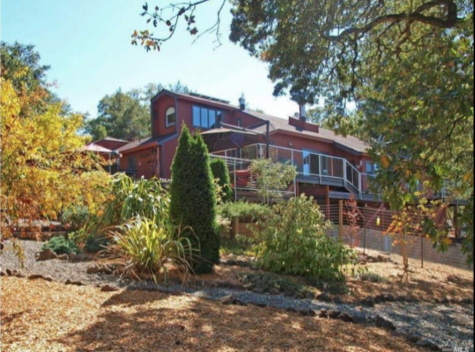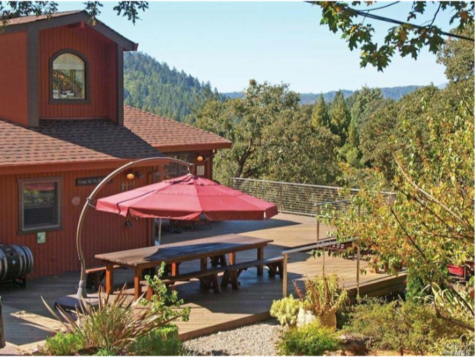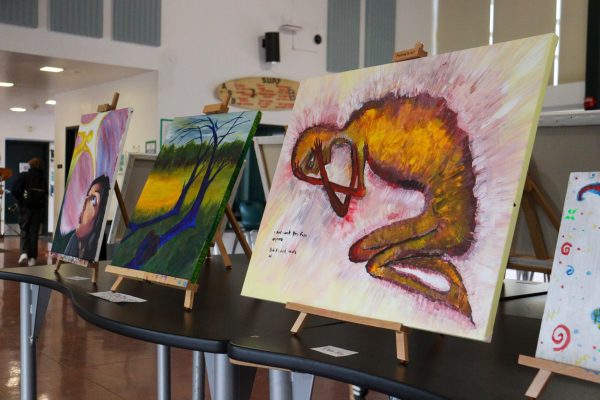California wildfire conditions concern local firefighters
Due to global warming and an increasingly dry climate, Marin firefighters are concerned about fire danger in years to come. With fires having posed major threats to California’s vitality in prior years, residents are also nervous that future fire seasons will be devastating.
Tod Lando is a firefighter who works as the Battalion Chief at the Central Marin Fire Department. After working with the Marin County Vegetation Management, he believes the dry climate has recently been hotter than normal due to global warming’s changing weather patterns.

“Because of higher temperatures and changes in rainfall patterns associated with climate change, we have a much longer fire season than in the past. Today’s fire seasons in California are almost 3 months longer than they were in 1970,” Lando said.
Since California experiences more dry seasons as part of its climate, Lando predicts the fire seasons will become longer.
“We expect California’s fire season to be even longer, and fires to be worse, as the climate warms. Droughts will be worse, and vegetation will be drier,” Lando said.
A warming climate doesn’t just affect the human population. With temperatures rising, plants and animals will suffer as well, meaning species will struggle finding food and water.
“Vegetation is suffering-with less moisture and higher temperatures, many plants and trees are stressed, with less water available and more competition from invasive plants that thrive in the warmer climate,” Lando said.
The most dangerous fire seasons in California come in the summer and fall, when the climate is drier and warmer winds may decrease moisture in the air. This phenomenon is called a “foehn wind,” which can play an extremely dangerous role in fire season as it creates a lack of natural moisture in the air.
“Although these winds are most common in September and October, we can see them in any month of the year, and they are more frequent with climate change,” Lando said.
According to Lando, some natural fires (not caused by human activity) can be beneficial for the environment, as they can clear out diseased trees, contributing to a healthier tree population.

“Wildfires are a natural part of our environment in Marin. They are actually important for our plants and forests,” Lando said.
Andrea Bogart, a yoga instructor and freelance actor, lives only 100 feet from where the Tubbs Fires started in Sonoma on Oct. 8. The local fires started a few months prior to Bogart and her family moving into Sonoma County.
“The way that I have felt is now there’s sort of preparation for it and sort of praying that your little town is not gonna get hit,” Bogart said.
Bogart hadn’t experienced a wildfire season before 2017. She said that the wildfires weren’t even on their minds when they moved into Sonoma, so the 2017 Sonoma Complex Fire frightened her family.
“That was the scariest for us, because it was the closest to home, and put our entire lives into this very precarious situation of wondering if we were going to even have a home to come back to,” Bogart said.
Roo Duncan lives in Napa, and in 2017, the Nuns Fire came within 150 feet of her property. More recently in 2020, Duncan lost her townhome in Calistoga Ranch due to fires.
“…We lost our hometown ranch, which was heartbreaking, especially because the entire resort was completely burned to the ground and most likely will never be rebuilt,” Duncan said.
Given this, Duncan feels nervous during fire season.
“It is hard to rest easy when the possibility of devastating fires is so real and just one spark away whether it be lightning or man made,” Duncan said.
Lorraine Jarvis, previous Santa Rosa resident, experienced complete destruction of all of her property and belongings in the 2017 Tubbs Fire.

“We later bought a ‘temporary’ house near our property. We spent 18 months designing a new home with the intent of rebuilding and living at our 11 acre property in Santa Rosa again, and in June 2019, the architectural plans were complete,” Jarvis said.
Shortly after the destruction of her Santa Rosa home, Jarvis visited Girona Spain for a vacation and decided to permanently move. After moving to Spain, she felt her life calm down, and she has been able to appreciate the constant clean air.
“We moved to our new home in 2020, our lifestyle here is very relaxing…where I live now makes me appreciate the consistent clean air,” Jarvis said.
As the climate continues to warm, firefighters remain concerned about the next fire season to come, while families affected by past fires still recover from their losses.
Your donation will support the student journalists of Archie Williams High School. Your contribution will allow us to purchase equipment and cover our annual website hosting costs. Each donation will receive a magazine subscription for a year (6 copies a year), and become a part of the important work our publication is doing.
$35 -- Subscription to the magazine
$50 -- Silver Sponsorship
$75 -- Gold Sponsorship
$100 -- Platinum Sponsorship

Kyra is a senior, in her third year of journalism. She loves pickles, listening to music, and stargazing. You can find her driving around with her bag...











